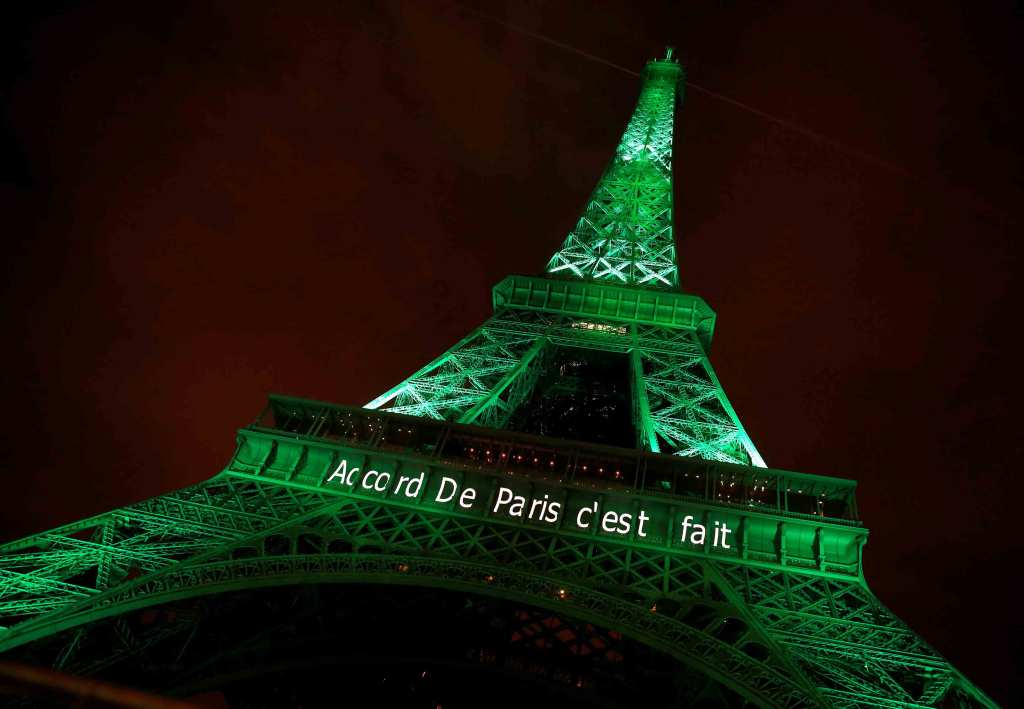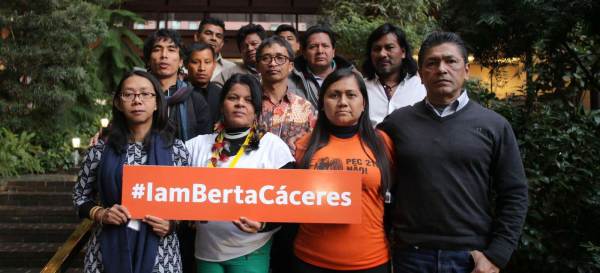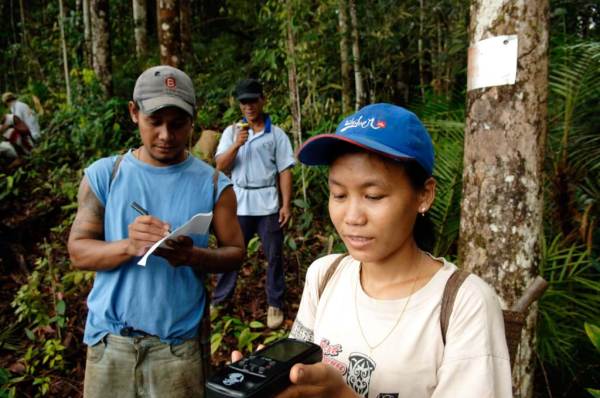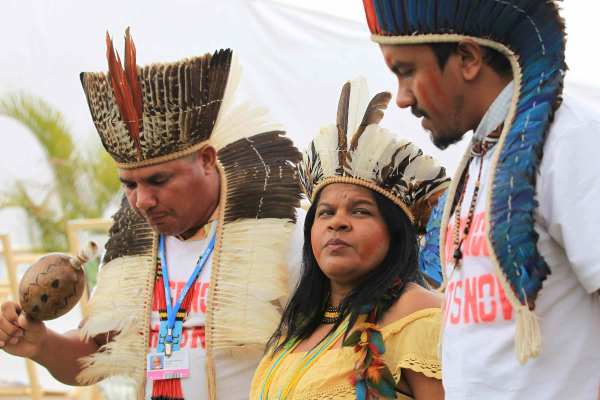
One year ago, world leaders from 195 countries adopted the Paris climate agreement, a plan to reduce CO2 emissions and slow the impact of global climate change. Ford Foundation program officers reflect on the progress made this year, the roles of business and indigenous land rights in combating climate change, and how countries are moving from planning to implementation.
Indigenous peoples and forest communities take center stage
David Kaimowitz, director, Climate Change and Natural Resources
From the Sioux protesters at Standing Rock, North Dakota to the global #GuardiansOfTheForest campaign, indigenous activists have been at the forefront of global climate efforts since the Paris Agreement was negotiated last year. They have been calling on governments and companies to help them protect their forestlands, and to keep fossil fuels in the ground.
These activists have gained prominent global allies, including Pope Francis, Prime Minister Erna Solberg of Norway, UN leaders Ban Ki-moon and Helen Clark, actors Leonardo DiCaprio and Alec Baldwin, supermodel Gisele Bündchen, business leader Paul Polman, and philanthropists Laurene Powell Jobs and Alexander Soros. These prominent figures have all spoken out about the importance of protecting the rights of indigenous peoples and communities. People are starting to wake up to the fact that everyone benefits when indigenous communities protect rivers, fields, and forests—because it helps slow global climate change.
Scientific studies released this year by prestigious think tanks like the World Resources Institute (WRI), the Woods Hole Research Center (WHRC), Rights and Resources (RRI), and Resources for the Future (RFF) show this is not just talk. These studies show that rural communities manage a large share of tropical forests—and the carbon they store—and that strengthening community land rights is a significant and cost-effective approach to addressing climate change.
Sadly, despite progress over the past year, indigenous climate defenders continue to pay a serious price for their efforts to protect their lands. Nine months ago, Berta Cáceres, an environmentalist and Lenca leader, was killed by armed intruders after years of defending the forests and rivers of Intibucá, Honduras. Last month, North Dakotan police beat hundreds of indigenous water protectors at Standing Rock. These are not isolated incidents: Global Witness has documented the murder of scores of rural environmentalists in Brazil, Colombia, the Philippines, and elsewhere.
In recent months, many people have worried that policy makers in the United States and elsewhere will back down on their commitments to combating climate change. But indigenous leaders are not deterred. They have resisted efforts by companies, governments and others to destroy their cultures and steal their lands for over 500 years. In the wake of the Paris Agreement, they will continue to protect nature, and work to ensure that oil and gas companies stop drilling on their lands and destroying their rivers. They will continue to fight. So should we.
Business’s integral but behind-the-scenes role in the Paris Agreement
Graham Macmillan, senior program officer, Inclusive Economies
Last year, the world saw three global frameworks established and adopted that could lead our planet to a stronger, more inclusive, and more sustainable future. The Financing for Development Conference, the Sustainable Development Summit, and COP21 were all milestones in their own right, but together they underscore the importance of adopting frameworks that integrate climate, people, and financial capital considerations. All three emphasize the urgency of adopting more sustainable behavior.
I had the privilege of being in Paris a year ago and I felt that sense of urgency. On a tight deadline, the French government and the United Nations managed to balance myriad national self-interests with the global interest—a feat well worth celebrating, and enforcing. World leaders like Tony deBrum, a climate change negotiator from the Marshall Islands, and Anne Hidalgo, the mayor of Paris, played an extraordinary role in COP21. And while the business sector did not have an official role in the negotiations, it will continue to play an instrumental role in implementation.
For businesses and investors, the Intended Nationally Determined Contributions (INDCs), serve as a road map for implementing the Paris Agreement. The INDCs lay out each country’s plan for investing in and supporting the intended goals over the next 20-30 years. Many of these efforts will be driven by energy, transportation, and industrial policy, so for companies large and small, traditional and innovative, the INDCs are integral to planning and building up resources. As we’ve seen before, once new business models are adopted and executed to support sustainable behavior, finance will follow.
A year after Paris, I remain encouraged and inspired by what the agreement achieved and built for the future. Beyond the Parisians’ ability to host the world only weeks after suffering devastating terror attacks, I was privileged to witness the establishment of a new global and sustainable business framework that will attract trillions of dollars of investment. While there are certainly challenges ahead, this important new framework will help shift capital to supporting innovative behavior that is forward-looking and creates value. And that will make a real difference in enabling progress on this critical issue.
More important than ever
Penny Davies, program officer, Equitable Development
This time last year I was in Paris when countries agreed to keep global warming to 1.5 degrees Celsius. It was a momentous occasion. Since then the question burning in my mind has been, Have countries been stepping up action to limit global climate change, or are they stepping back? The responses of many countries suggest they understand that action is more important than ever.
So far 112 governments have publicly registered their national contributions with the UN, statements that lay out what each will do to tackle climate change. And the market conditions favor them. The declining costs of renewable solar and wind power, as well as battery storage, are a hopeful sign that the market shard of clean energy will increase, helping countries reduce carbon emissions from fossil fuels.
But in order to reach the goals set forth in the Paris Agreement, we need to do more than stem new CO2 emissions. We also need to remove the CO2 pollution already in the atmosphere. Tropical forests and other natural carbon “sinks” are critical for doing this. Because indigenous peoples have an essential role in protecting these forests, securing land tenure for indigenous communities is a way to reduce existing CO2 pollution and fight climate change. It’s also cost effective. To help, we need to support indigenous peoples and local communities across the world as they press for policies that strengthen their rights to their land.
Unfortunately, progress is slow: Only a fraction of the world’s many forest countries are committed to including recognition of indigenous and community land rights as part of their nationally determined climate contributions under the Paris Agreement. Furthermore, scaling up this climate solution on the ground will require connecting hard-to-reach local community organizations with hard-to-tap expertise and public funding. As the first and only institution exclusively focused on securing collective rights to land and forests—and designed to respond quickly to community needs—the Tenure Facility, a new project of the Rights and Resources Initiative, is a potential game changer. I look forward to seeing its impact in 2017 and beyond.





